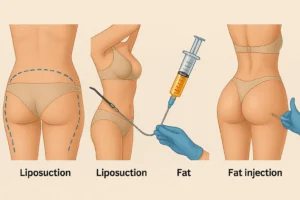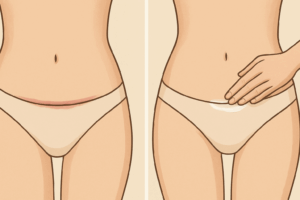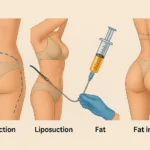What are Chronic Diseases?
Chronic diseases are health conditions that often have a long-term course and are difficult to treat. They can often last a lifetime and require ongoing medical intervention or management.
Prevalence of Chronic Diseases
The prevalence of chronic diseases is increasing worldwide. Especially in developed countries, the incidence of chronic diseases is increasing significantly due to lifestyle changes and population aging.
- Cardiovascular Diseases: Conditions such as heart disease and stroke are among the leading chronic diseases.
- Diabetes: Diabetes, also known as diabetes, is a major health problem affecting millions of people worldwide.
- Cancer: Types of cancer that can develop in different organs can have a chronic course and treatment can be long-term.
Socioeconomic Impacts of Chronic Diseases
The impact of chronic diseases on individuals can have significant consequences not only in terms of health, but also at the economic and social level. These diseases can lead to loss of labor force, increase health expenditures and negatively affect overall quality of life.
- Economic Burden: The treatment costs and long-term care requirements of chronic diseases can impose a heavy economic burden.
- Social Impacts: Chronic diseases can limit individuals' social relationships and activities of daily living and can be psychologically challenging.
Types of Chronic Diseases
Heart and Vascular Diseases
One of the most common types of chronic diseases is cardiovascular disease. These diseases are characterized by the inability of the heart to perform its normal functions or the vessels to ensure normal blood flow.
- Coronary Artery Disease (CAD): A condition caused by narrowing or blockage of the heart vessels. It can lead to serious complications such as angina (chest pain) and myocardial infarction (heart attack).
- Hypertension (High Blood Pressure): Blood pressure is higher than normal. Long-term hypertension can have a negative impact on cardiovascular health and can lead to conditions such as stroke and heart failure.
Diabetes (Diabetes)
Diabetes is a metabolic disease characterized by the body's inability to maintain normal blood sugar levels. It can be caused by problems in the production or use of insulin.
- Type 1 Diabetes: It occurs when the pancreatic beta cells are attacked by the immune system and insulin production stops. It usually starts in childhood or young adulthood.
- Type 2 Diabetes: It occurs when the body cannot use insulin effectively or cannot produce enough of it. Lifestyle factors (eating habits, physical activity level) can increase the risk of type 2 diabetes.
Cancer
Cancer is characterized by uncontrolled cell growth in various tissues of the body. Cancer types vary and each may require different treatment approaches.
- Breast Cancer: It is one of the most common types of cancer in women. It can usually be successfully treated with early diagnosis and treatment.
- Lung Cancer: Risk factors, such as smoking, can increase the risk of developing lung cancer. Diagnosis in the early stages can increase treatment success.
Respiratory System Diseases
Respiratory diseases cover a variety of conditions that affect respiratory function. Conditions such as asthma, COPD (Chronic Obstructive Pulmonary Disease) and pulmonary fibrosis fall into this category.
- Asthma: Difficulty breathing as a result of inflammation of the airways. Trigger factors (allergens, exercise, cold air) can trigger an asthma attack.
- KOAH: It occurs when the lungs can expel air from the lungs less efficiently than normal. Smoking is one of the most common causes.
Risk Factors of Chronic Diseases
Genetic Factors
Genetic factors play an important role in the development of chronic diseases. Genetic predisposition determines an individual's susceptibility to certain diseases and these factors can increase or decrease the risk of disease.
- Family Background: The presence of chronic diseases in the family can increase the risk of developing the disease. For example, conditions such as hereditary heart disease or diabetes can be passed on genetically.
- Genetic Mutations: Some genetic mutations can increase the risk of developing certain diseases. For example, BRCA gene mutations can significantly increase the risk of breast cancer.
Lifestyle and Dietary Habits
Individuals' lifestyle and dietary habits play an important role in the development of chronic diseases. Unhealthy diets, low levels of physical activity and harmful habits can increase the risk of disease.
- Unhealthy Nutrition: A diet high in fatty and sugary foods can trigger health problems such as obesity, heart disease and diabetes.
- Physical Activity Level: People who do not exercise regularly are at increased risk of chronic diseases such as obesity, hypertension and metabolic syndrome.
Environmental Factors
Environmental factors can also be influential in the development of chronic diseases. Factors such as air pollution, chemical exposures and stress can have a negative impact on health and increase the risk of disease.
- Air Pollution: Polluted air can lead to chronic health problems such as respiratory and cardiovascular diseases.
- Stress and Psychological Factors: Chronic stress can have negative effects on the immune system and increase the risk of disease.
Symptoms and Diagnosis of Chronic Diseases
Chronic diseases can have a wide range of symptoms and the diagnostic process usually starts with the identification of symptoms. In this section, the symptoms and diagnostic methods of chronic diseases will be examined in detail.
General Symptoms
Symptoms of chronic diseases can vary depending on the type of disease and the organs or systems it affects. But some common symptoms include:
- Fatigue and weakness: Chronic illnesses are often associated with a feeling of constant fatigue. This is a sign that the body is in a constant struggle.
- Pain: Severe or persistent pain is common, especially in musculoskeletal diseases and inflammatory conditions.
- Shortness of breath: This condition, which is evident in respiratory system diseases, may indicate that oxygen exchange becomes difficult.
- Digestive Problems: In diseases affecting the gastrointestinal system, digestive problems may be common.
Diagnostic Methods and Tests
Chronic diseases are usually diagnosed through careful assessment of symptoms and specific tests. Some common methods used in the diagnostic process are:
- Laboratory Tests: Blood tests, urine analysis and other biochemical tests are used to reveal typical symptoms of the disease.
- Imaging Techniques: Imaging methods such as X-ray, MRI and CT scans are used to assess the structure and functionality of organs.
- Biopsy: In some cases, a biopsy may be performed for microscopic examination of the tissue.
Management and Treatment of Chronic Diseases
Medication Therapy
In most chronic diseases, drug therapy is an essential component to control symptoms and slow disease progression. The basic principles of drug therapy are:
- Symptomatic Treatment: Medicines used to relieve or eliminate symptoms.
- Treatments Targeting the Root Causes of Disease: Medicines that target the underlying causes of the disease can halt or reverse its progression.
- Personalized Treatment Plans: Customized treatment plans are developed according to the patient's age, health status and disease characteristics.
Surgical Interventions
Surgical interventions may be necessary to manage some chronic diseases. Surgical options are usually used to
- Repair of Damaged or Affected Tissues: For example, bypass operations in heart disease or surgical removal of tumors in cancer treatment.
- Improving Quality of Life in Advanced Stages of Disease: For example, prosthetic surgery in joint diseases or bariatric surgery in obesity management.
Physical Therapy and Rehabilitation
Physical therapy and rehabilitation play an important role in the management of chronic diseases. These treatment modalities may include:
- Physical Exercise Programs: Exercises designed to increase muscle strength, improve flexibility and improve overall health.
- Rehabilitation Programs: Rehabilitation programs, especially after a stroke or surgery, aim to improve the patient's daily life.
Quality of Life and Psychological Effects in Chronic Diseases
Factors Affecting Quality of Life
The impact of chronic diseases on quality of life is determined by a variety of factors:
- Physical Effects: Physical symptoms, such as persistent pain, fatigue, movement limitations, negatively affect daily activities and quality of life.
- Social and Emotional Impacts: The limitations and stigmatization of the disease can limit social relationships and social activities.
- Economic Impacts: Factors such as treatment costs and loss of earning capacity can lead to economic hardship.
Psychological Support and Counseling
Psychological support and counseling services are of great importance in the management of chronic diseases:
- Individual Counseling: Helps patients manage their emotional reactions and cope with the illness.
- Family Counseling: It is important to understand the impact of the disease on family dynamics and to ensure the support of family members.
- Group Therapies and Support Groups: Provides support and solidarity among patients who share similar experiences and reduces isolation.
























